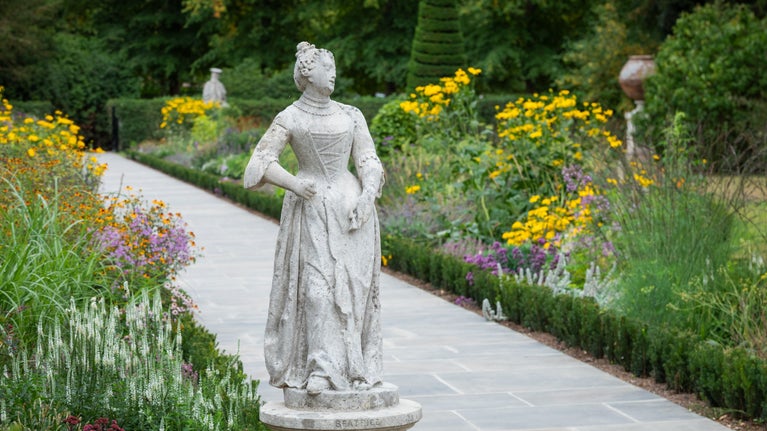Back to the future: Cliveden’s reimagined Long Garden looks ahead while cherishing its past
- Published:
- 10 September 2025

The National Trust has completed a major restoration of the Long Garden at Cliveden in Buckinghamshire, breathing new life into one of the estate’s most iconic formal spaces.
The 200-metre garden, originally designed in the 1930s by celebrated garden designer Norah Lindsay for the Astor family, has undergone a transformation that blends its heritage with a more contemporary, resilient solution.
The restoration project has reimagined the garden’s planting and overall structure to meet the challenges of a changing climate and enhance visitor accessibility while honouring Lindsay’s original vision. Known for her textured planting, vertical elements and sculptural topiary, Lindsay’s influence remains central to the new design, which features yew ‘pin cushions’, tall beech ‘beehives’, and a rich tapestry of herbaceous plants and ornamental grasses.
Cliveden General Manager Robert Miles said:
“This restoration is about more than preserving a beautiful garden – it’s about reinterpreting a historic design for the future. Norah Lindsay’s bold vision has guided us, and we’ve worked to ensure the Long Garden remains a place of inspiration, biodiversity and accessibility for generations to come.”
Cliveden’s garden team worked with garden and landscape designer James Scott of The Garden Company on the new masterplan for the garden.
James said: “Cliveden attracts thousands of visitors every year. What I really hope is that when people visit the redesigned Long Garden, they will find it a very immersive, tranquil experience. At the height of summer, there will be some large, dramatic herbaceous plants making people feel that they are ‘in’ the space rather than simply going through it.”
The new planting scheme replaces the previous annual bedding displays, which were visually striking but unsustainable due to their monoculture nature and high resource demands.
Instead, a no-dig approach has been adopted to reduce soil disruption, and the garden now features a biodiverse mix of shrubs, perennials and grasses. These have been chosen for their long seasons of interest and ability to support pollinators and wildlife.
Outside the main spring to autumn season, rose hips, along with the stems and seedheads of Pennisetum and Calamagrostis, provide interest and habitat in the winter months.
Head Gardener Anthony Mason said:
“We’ve designed the garden to have interest all year round and be relevant to today’s modern climate. The new planting will attract a wider range of pollinators, and by allowing plants to die back naturally, we’re creating shelter and food sources for insects and birds throughout the year.”
Head of Gardens and Parks, Sheila Das, said:
“Gardening is a future-focussed act which is often at its most resonant when inspired by what went before. The reimagination of the Long Garden at Cliveden really builds upon the idea that as we adapt our gardening approach to work with our available resources and the changing climate, we can find new beauty and share inspiration with everyone who comes to visit now and for many years to come.”
Accessibility has also been improved. The central path has been widened and paved with durable Apperley Antique Yorkstone, hand-dressed to complement the garden’s historic character. New automated gates, designed in a historically sympathetic style, open at the beginning of the day to provide easier access and a more welcoming approach, and close at the end of the day to keep deer out. Conservation work on the historic walls of the garden completes the project.
Norah Lindsay’s story adds a compelling human dimension to the garden’s legacy. Once a well-connected aristocrat, Lindsay reinvented herself as a garden designer in her fifties, following personal and financial upheaval. Her work at Cliveden remains one of her most enduring contributions to British garden design.